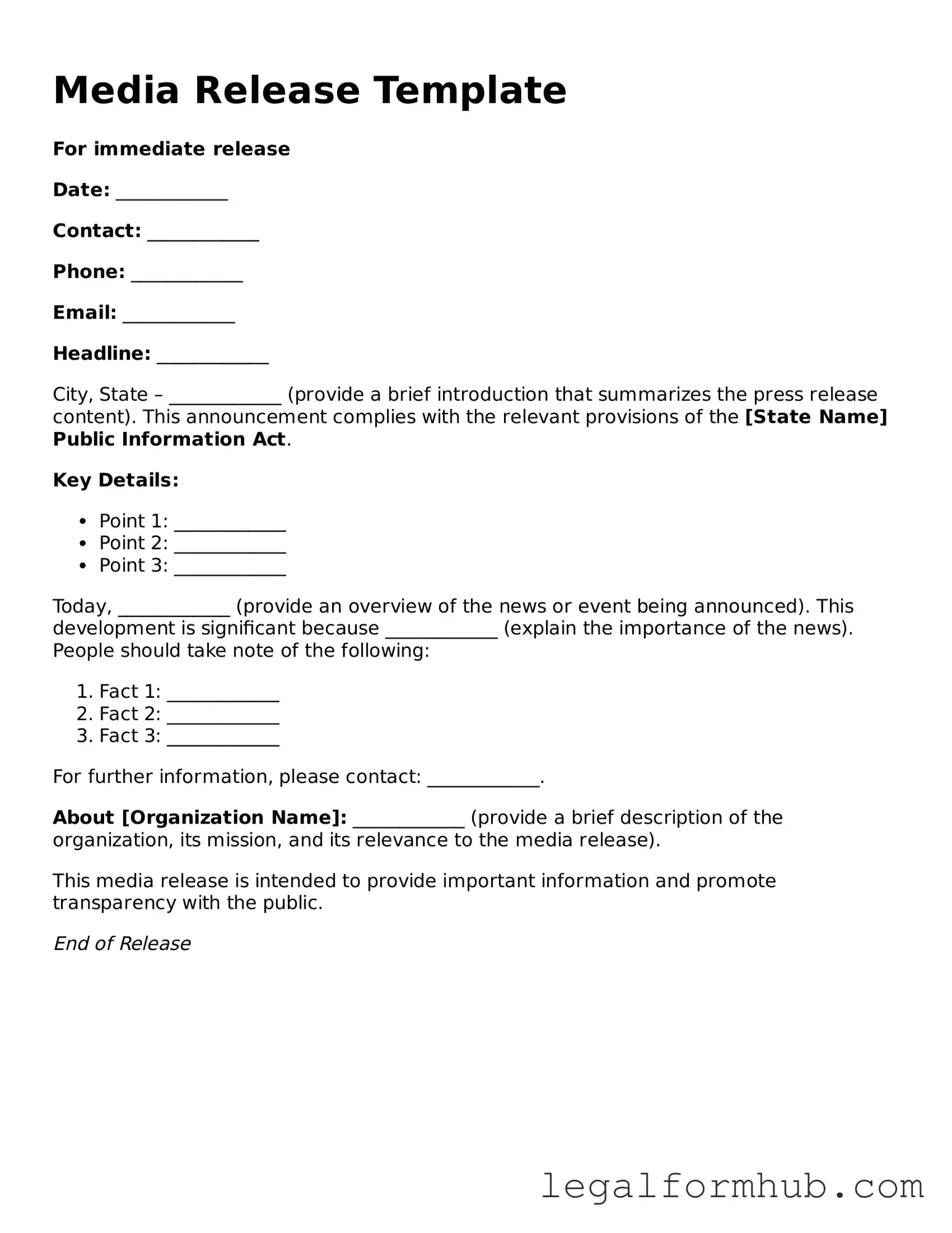The Media Release form shares similarities with the Consent Form, which is often used in various contexts, including medical and educational settings. Both documents serve to obtain permission from individuals before their information or likeness is used. In the case of the Consent Form, individuals agree to participate in a study or treatment, while the Media Release form allows for the use of their image or voice in media productions. Both documents emphasize the importance of informed consent, ensuring that individuals understand how their information will be utilized.
Another document akin to the Media Release form is the Waiver of Liability. This document is commonly used in events or activities where participants may face risks. Similar to the Media Release, it requires individuals to acknowledge and accept potential risks associated with their participation. Both documents protect the organizing party from legal claims by ensuring that participants are aware of what they are consenting to, albeit in different contexts.
The Photography Release form is closely related to the Media Release. This document specifically addresses the use of photographs taken of individuals, granting permission for their images to be used in various media. Like the Media Release, it outlines the scope of use, whether for promotional materials, websites, or social media. Both forms aim to protect the rights of the individual while allowing organizations to utilize their likeness in a lawful manner.
In the realm of film and television, the Talent Release form is another document that bears similarities to the Media Release. This form is specifically used to secure permission from actors or performers for the use of their performances in a production. Like the Media Release, it details how the performance will be used and ensures that the talent relinquishes certain rights. Both documents are crucial in the entertainment industry, facilitating the legal use of individuals' contributions.
Understanding the nuances of various release forms is critical, especially when it comes to protecting your rights and interests. For instance, the Vehicle Release of Liability form plays a vital role in safeguarding vehicle owners from potential liabilities after transferring ownership. By incorporating a comprehensive understanding of such documents, one can ensure a seamless transition and avoid legal complications. To facilitate this process, consider accessing resources like PDF Documents Hub for guidance and templates that can help you create the necessary forms.
The Release of Claims form also parallels the Media Release in that it seeks to protect organizations from future legal actions. This document is often signed by individuals before participating in activities that may pose a risk. It ensures that participants agree not to hold the organization liable for any injuries or damages. While the Media Release focuses on the use of personal information or likeness, both forms emphasize the importance of consent and understanding potential consequences.
Lastly, the Non-Disclosure Agreement (NDA) can be seen as related to the Media Release form. While an NDA primarily protects confidential information, both documents require individuals to agree to specific terms before engaging in a particular activity. The Media Release form allows for the use of personal information in media, while the NDA restricts the sharing of sensitive information. Each document serves to establish clear boundaries and expectations between parties, ensuring that all involved understand their rights and responsibilities.
